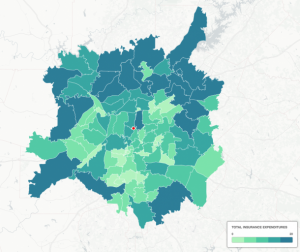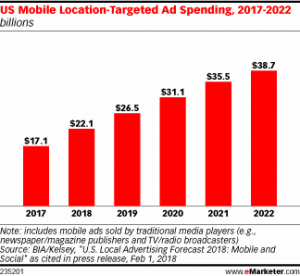Getting in front of your target audience just got elevated to a whole new level. By leveraging the power of geo-targeting health brands are getting direct to consumers and carving out an unshakable market advantage.
The days of casting a wide marketing net and passively waiting for sales is over. With health brands jockeying for valuable space in an already fragmented market, the most innovative brands will win out.
And geo-targeting is their stealth marketing weapon.
There’s no denying it…
You need to be where your customers are and when they are most likely to buy. If you don’t capitalize on this rare shopping window, then you’re leaving lots of money on the table.
Geo-targeting isn’t only about driving sales. It’s about reducing costly and time-consuming marketing waste.
When you can hone in on target audiences that want and will buy your products, you can better control your marketing spend.
What’s the secret behind geo-targeting?
It’s not the technical aspects behind how geo-targeting works that you need to understand. Instead, it’s the ins and outs of why it works that is important to know.
There are three ways that geo-targeting is the best way to drive more retail sales.
1-Time advantage translates into a faster sales cycle
Geo-targeted marketing messages are often acted on immediately.
The time between receiving an SMS message about a promotional sale in a nearby store and when the consumer buys the product can be short. Perhaps even under a few minutes.
In the same way the Internet revolutionized our level of convenience, geo-targeting is redefining when and how we market.

The “awareness-action-purchase” cycle is short and doesn’t require multiple marketing touchpoints for health brands to make the sale.
The customer gets a push notification based on their location (Awareness). The customer enters the retail store (Action). The customer buys the product (Purchase). It’s through this power of immediacy that marketers can shape consumer behavior.
2. Location range can be optimized
The marketing radius for geotargeting can be adjusted to drive sales.

Geotargeting is designed not to be a one-size-fits-all model. Using a smaller radius one day may increase sales over using a larger, more expanded marketing radius the next.
The key to finding the optimal range is not in how big you make your targeted area as it is in identifying what behavioral or demographic factors must be considered to select the right size to reach. To find the marketing sweet spot, you should test various platforms and use those metrics to make informed decisions on the best geo-targeting radius size for your brand and geographical area.
You can do this, for example, using both Google AdWords and Facebook Ads. Whether you want to create a digital “fence” around a retail store or geotarget by zip code or radius, these platforms have fairly robust options for ways to segment your audiences geographically.
3. Marketing adjustments can be made in real-time
Tracking sales for geo-targeting efforts allows for fast adjustments.
For geo-targeting to be effective, it cannot be used in isolation.
You must have quantifiable data to verify if your targeted campaigns are working. Monitoring sales volume changes based on the time of day, radius size used, and even the promotional offer sent to customers – these are all critical pieces of data to collect.
The importance is not in just collecting the data as it is in understanding what it means and how you can leverage it to make incremental adjustments to optimize your geo-targeting. At an estimated $31.1 billion, geo-targeting is one of the fastest growing marketing segments in the world. Not to mention one that will be hard to ignore.

With real-time and actionable marketing insights at your fingertips, not using geo-targeting to position your health brand soon won’t be an option. That is, if you want to make money.
With only a small subset of companies using geo-targeting, it is easily the most underutilized marketing tool that can have a big impact on your bottom line. Invest in understanding how to implement it for your health brand and the ROI you generate can and will speak for itself.
